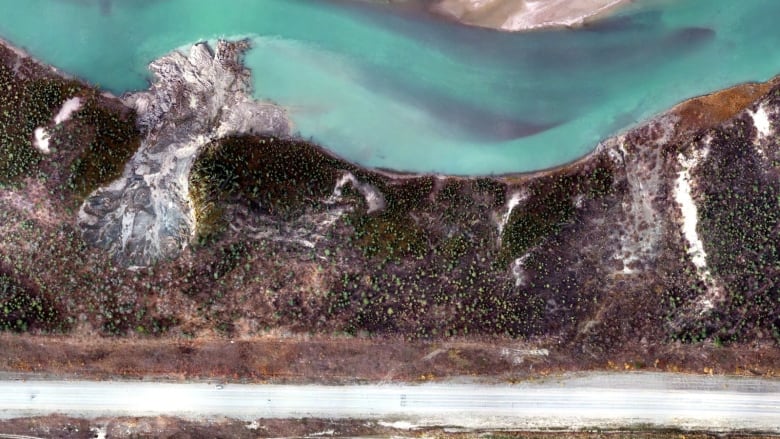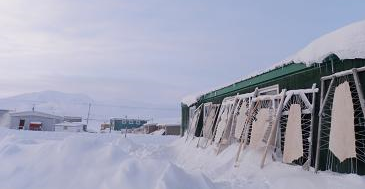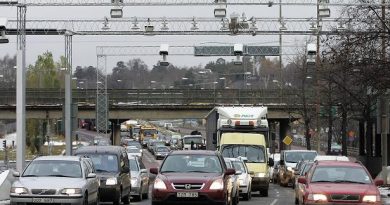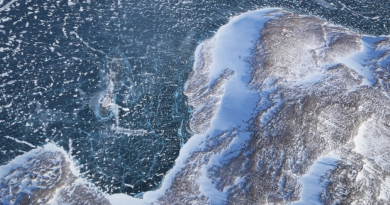Cutting Yukon carbon emissions by 45% possible, with ‘wartime-like effort,’ council finds

Reducing carbon emissions in Yukon by 45 per cent within the decade, while doable, will require an effort akin to preparing for war, according to a new report.
The report, entitled “Climate Shot 2030,” is produced by the Yukon Climate Leadership Council and gives a litany of recommendations to the Yukon government. They include using low carbon diesel fuel, applying penalties for heating with fossil fuels, making residential areas more dense and retrofitting buildings owned by Crown corporations.
But one undercurrent of the report is clear: lowering emissions hinges on a concerted approach, with strong leadership on the part of the territorial government.
“It seemed like a very daunting task at the beginning of our process, but now we know [reducing emissions] is possible,” said co-chair Kirsten Hogan, adding that individual action, while important, isn’t enough to make needed gains.
In 2020, the territorial government released “Our Clean Future,” its climate change action plan. Key to the plan was bringing down emissions by 30 per cent by 2030. That figure was soon upgraded to a more ambitious target of 45 per cent, which the government set after it signed a confidence and supply agreement with the Yukon NDP after failing to secure a major win in last year’s general election.
Enter the climate leadership council, which was created by the government to figure out how, exactly, the territory could hit the new target. The target means reducing emissions to 336 kilotonnes below 2010 levels by the end of the decade.
According to the report, there’s a gap of 160 kilotonnes between this new target and projected emissions. However, if all the recommendations are followed, the territory can outstrip that figure, reducing emissions by 184 kilotonnes.
“We don’t know exactly what our emissions will be in 2030, so the target that we’re trying to hit is a bit of a moving one, but we have enough emissions data to track what we think it will be,” Hogan said.
Recommendations zero in on government, fill in gaps
The territorial government is currently mulling over the report, likely figuring out whether to accept or modify recommendations — some of which touch on governmental accountability.
The report calls for carbon costs to be factored into government decisions at a rate between $250 and $400 per tonne. As well, it recommends performance goals of senior officials be linked to reducing emissions and issuing annual departmental reports on progress.
“Giving departments a specific mandate to reduce emissions in their sector and making them accountable and responsible for those reductions” is of utmost importance, Hogan said. “If they have a cost of carbon built into their economic analysis, that’ll shift what we decide is a good project to go forward with.”
The work of the council appears to fill in blindspots of the government’s climate action plan.
Sebastian Jones, wildlife analyst at the Yukon Conservation Society, said an example of that is the recommendation to safeguard areas that store carbon like wetlands and forests.
The report also recommends planting swaths of deciduous trees to sequester more carbon.
“We need to get to zero, and, in fact, we need to go beyond zero: We need to start drawing carbon out of the atmosphere,” Jones said.
“Neither this Climate Shot 2030 report, nor Our Clean Future address the really big elephant in the room, though, which, of course, is emissions from mining.”
Strategies to reduce emissions from the mining sector are part of a separate process. The territorial government has publicly stated intensity-based targets will be established by the end of the year.
Yukoners can submit feedback on that process until Oct. 3.
Related stories from around the North:
Canada: After decades of dwindling runs, sockeye salmon return to Yukon fishing village in droves
Finland: Arctic warming twice as fast as previously thought, says Finnish study, Yle News
Greenland: Equipment for Arctic ice survey tested this summer in German highlands, Eye on the Arctic
Norway: Heatwave across northern Scandinavia, The Independent Barents Observer
Russia: Record-breaking heat followed by extreme cold on Russian Arctic coast, The Independent Barents Observer
United States: Could melting Arctic sea ice be responsible for U.S. wildfires?, Eye on the Arctic



